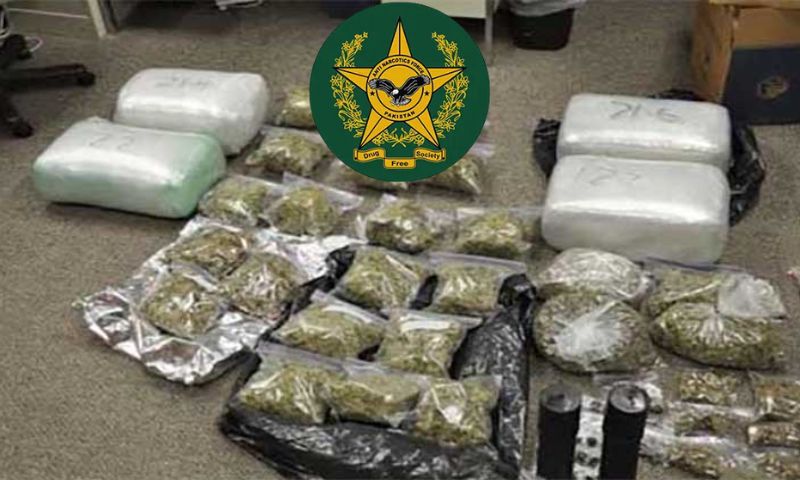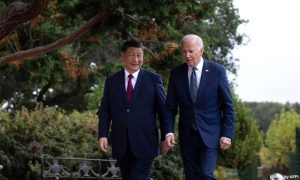Pakistan faced a severe crisis as the value of the US dollar skyrocketed compared to the Pakistani rupee. In the interbank market, it was trading at an alarming rate of Rs. 307, while in the open market, it reached an even higher rate of Rs. 340. Speculations were rife that it might even reach Rs. 500 within a month.
This situation led to a rush of people into the currency markets, desperate to exchange their rapidly depreciating Pakistani currency for any foreign currency available, including the Afghan Afghani. The market faced an acute shortage of foreign currency, and the Rupee’s value continued to plummet with each passing day. People were witnessing their hard-earned savings evaporate.
Strangely, Pakistan’s foreign currency reserves were adequate to meet local needs even though the US dollar was disappearing from the local market at an unprecedented rate making imports more expensive, eroded the purchasing power of the common people, and increased the challenge of repaying international loans and debts, which had become a daunting task for the government’s financial managers.
The anticipation of a bleak economic and financial future, with no visible remedies in sight, prompted families with the means to seek safety in other countries, driven by the need to protect their hard-earned income and secure a better future for their children.
The skyrocketing value of the US dollar was not the sole issue plaguing the economy. Rampant smuggling of essential commodities like flour, sugar, fertilizer, oil, and other precious goods was causing them to disappear from the market. This, in turn, led to rising costs and hyperinflation, triggering panic buying, exacerbating shortages, and driving up prices, ultimately contributing to economic and social unrest.
But the challenges didn’t end there. The unchecked smuggling of Iranian petrol into the country was rapidly depleting the government’s petroleum levy, a vital source of revenue needed to sustain government operations.

And the story continued. The unbridled and unregulated smuggling of illicit psychoactive drugs and their ready availability even at the school level were fueling a drug epidemic among students in schools, colleges, and universities, spreading like wildfire.
A more significant and pressing threat loomed over the nation: the unchecked and escalating incidents of terrorism. These acts of violence targeted soldiers, police officers, government officials, ordinary pedestrians, and worshippers alike. The Tehreek-e-Taliban Pakistan (TTP), operating from Afghan soil, were launching attacks within Pakistan. It was highly likely that they were abetted and supported by the interim government of the Afghan Taliban. Despite repeated requests, the Afghan authorities refused to take decisive action, assuming they could continue without facing any consequences, as they had in the past.
Deep down, the authorities in Pakistan realized that these crimes, which undermined the very foundations of the country and subjected it to financial, economic, social, and cultural perils, couldn’t be solely of Pakistani origin. There had to be critical outside factors contributing to the destruction of the nation.
This realization led the law enforcement agencies and the establishment to investigate further. They soon discovered that behind all these illegal, anti-state activities, terrorism, and smuggling, a common factor emerged: illegal Afghan nationals. These individuals were enjoying the civil, legal, social, business, trade, and investment facilities available to them as if they were common citizens of Pakistan. However, instead of showing gratitude and complying with the country’s rules, regulations, and laws, they were, in fact, undermining the very roots and branches of the nation, depriving it of its potential.
These illegal Afghan nationals were rapidly transferring much-needed foreign exchange from Pakistan to Afghanistan, leading to an unprecedented appreciation of the Afghan Afghani. Essential commodities urgently required in Pakistan were smuggled to Afghanistan and then exported to Central Asian countries, generating substantial profits. They were also involved in drug smuggling, jeopardizing the future generations of Pakistan, while the money earned was being used to send both dollars and commodities to their home country without any consequences.
The change in leadership at the top of the establishment served as a wake-up call for our law enforcement agencies. These anti-state activities had been ongoing under their very noses for an extended period, sapping the life and vitality out of the already fragile body of the country. This vulnerability left Pakistan susceptible to various threats, including economic, social, and political crises. Simultaneously, those involved in these activities were advancing their personal interests and filling their coffers to the brim. They were actively transferring their ill-gotten wealth to foreign countries often referred to as safe havens while relocating their families abroad.
Recognizing the speed at which the country was descending into chaos, the new leadership at the top of the establishment realized that it would soon become uninhabitable. A shift away from the status quo was undertaken to address the rapid deterioration plaguing the nation. The policy of appeasement towards Afghans and their sympathizers was replaced by a strategy driven by the paramount national interest.
A meticulously crafted, integrated, and effective policy, supported by resolute political commitment from the establishment, was put into action. This strategy encompassed a comprehensive seven-pronged plan of action, executed with precision.
It included robust border control measures, closure of smuggling routes using modern technology, the formalization of the Afghan-Pakistan border, stringent passport and visa regulations, cooperation from legal currency dealers to obtain vital information about bulk dollar purchases for hoarding and smuggling, crackdowns on Hawala and Hundi markets, and the imposition of regulatory duties on Afghan Transit Trade to deter unnecessary imports and smuggling back into Pakistan. These measures collectively aimed to protect national interests and restore stability to the country.
Illicit businesses that had been operating with complete impunity, such as water hydrants and the hoarding of wheat, sugar, fertilizers, oil, and other essential commodities, were subjected to thorough raids. Their stockpiles were confiscated and then sold in the open market at controlled prices.
A comprehensive crackdown was launched against drug smuggling and the distribution network of illegal drugs. Operatives involved in this illicit trade were apprehended and placed behind bars.

An amnesty period of one month was provided to all illegal aliens, allowing them to leave the country without facing legal consequences for their unauthorized stay in Pakistan. This primarily included 1.7 million Afghans who had been residing in the country for a significant duration, as well as those who had fled Afghanistan following the establishment of the Taliban’s rule. A few of them had been promised evacuation to the UK, USA, and other European countries, but these host countries had been slow in fulfilling their promises, leaving Pakistan to bear the burden alone. The government’s prudent decision eventually spurred the UK and USA to reactivate their programs and fulfill their commitments to repatriate the Afghans, as initially pledged after the establishment of the Taliban’s rule in Afghanistan.
The action taken against the 1.7 million illegal Afghan migrants was resolute and unwavering. They were duly warned that after the expiration of the one-month amnesty period, they would be placed in detention camps, and their assets, both immovable and movable, would be confiscated.
The currency stabilized, becoming one of the top-performing currencies globally against the US dollar and major world currencies. The availability of essential commodities within the country provided much-needed reassurance, averting a state of emergency and panic. The stock exchange turned bullish, breaking records for business activity over the past five years. Dollar availability improved, benefiting businesses in the country. Incidents of terrorism were curtailed, reducing in both frequency and lethality.
Tightened border controls substantially reduced smuggling of petroleum products, illegal drugs, foreign goods, and the reentry of Afghan transit trade into Pakistan. This provided a boost to the consumption of locally made goods and commodities, offering much-needed relief to our manufacturing and consumer sectors. Those who were contemplating leaving the country in panic found solace.
All in all, the establishment made prudent decisions, with an outstanding strategy and unwavering political will. The immediate results have instilled a sense of security and hope for a better and more secure future among the nation. Refusing to succumb to external and internal pressures, this approach aligns with the collective desire and wish of the entire nation to safeguard the country’s legitimate interests, and this strategy will persist until all objectives are achieved.























